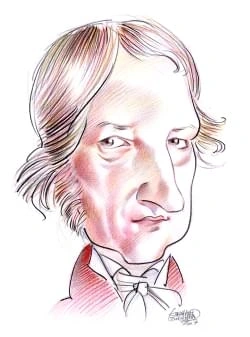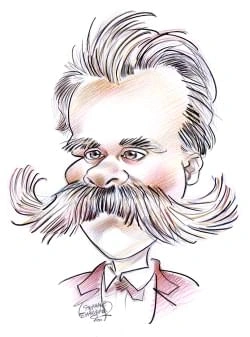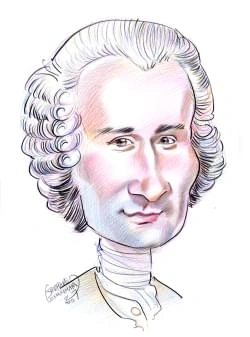249 résultats pour "coast"
-
Somalia - country.
A Agriculture Livestock raising is the principal occupation in Somalia. The size of livestock herds began to recover in the mid-1990s after falling during the country’s civil war. Sheepand goats are the most numerous livestock, with smaller numbers of cattle. The principal crops grown are corn, sorghum, sugarcane, cassava, and bananas. B Forestry and Fishing While most wood is cut for fuel, Somalia’s major forestry export products before the 1990s were frankincense and myrrh. Fish is an import...
-
Egypt - country.
Egypt has a wide variety of mineral deposits, some of which, such as gold and red granite, have been exploited since ancient times. The chief mineral resource ofcontemporary value is petroleum, found mainly in the Red Sea coastal region, at Al ‘Alamayn (El ‘Alamein) on the Mediterranean, and on the Sinai Peninsula. Otherminerals include phosphates, manganese, iron ore, and uranium. Natural gas is also extracted. D Plants and Animals The vegetation of Egypt is confined largely to the Nile Delta,...
-
Ancient Greece.
The first culture of Aegean civilization on the Greek mainland is named Mycenaean for the palace at Mycenae on the Pelopónnisos. Scholars call the Mycenaeans the“earliest Greeks” because they are the first people known to have spoken Greek. Mycenaean culture developed later than Minoan. The ancestors of the Mycenaean people wandered onto the mainland from the north and the east from about 4000 to2000 BC, mixing with the people already there, and by about 1400 BC the Mycenaeans had become very...
-
Ancient Greece .
The first culture of Aegean civilization on the Greek mainland is named Mycenaean for the palace at Mycenae on the Pelopónnisos. Scholars call the Mycenaeans the“earliest Greeks” because they are the first people known to have spoken Greek. Mycenaean culture developed later than Minoan. The ancestors of the Mycenaean people wandered onto the mainland from the north and the east from about 4000 to2000 BC, mixing with the people already there, and by about 1400 BC the Mycenaeans had become very...
-
Ancient Greece - USA History.
The first culture of Aegean civilization on the Greek mainland is named Mycenaean for the palace at Mycenae on the Pelopónnisos. Scholars call the Mycenaeans the“earliest Greeks” because they are the first people known to have spoken Greek. Mycenaean culture developed later than Minoan. The ancestors of the Mycenaean people wandered onto the mainland from the north and the east from about 4000 to2000 BC, mixing with the people already there, and by about 1400 BC the Mycenaeans had become very...
-
Dominican Republic - country.
Manatees and sea turtles also live in Dominican waters. Common birds include blue herons, glossy ibis, flamingos, and brown pelicans. E Environmental Issues Urban dwellers of the Dominican Republic enjoy good access to safe water, but rural communities do not. While current water use is low relative to available resources,water shortages do occur. Although deforestation was once a serious problem in the Dominican Republic, by the beginning of the 21st century, the annual rate of deforestation h...
-
New Brunswick - Geography.
Grand Lake, the largest lake in New Brunswick, is in the lowlands, east of Fredericton. Most other lakes are located in the northern and southwestern parts of NewBrunswick. D Climate New Brunswick has a continental climate that is moderated by maritime influences in the coastal areas. As a result, coastal regions are slightly warmer in the winter andslightly cooler in the summer than are interior regions. Annual temperature variations are large, with the January mean usually at least 25 to 28°C...
-
New Brunswick - Canadian History.
Grand Lake, the largest lake in New Brunswick, is in the lowlands, east of Fredericton. Most other lakes are located in the northern and southwestern parts of NewBrunswick. D Climate New Brunswick has a continental climate that is moderated by maritime influences in the coastal areas. As a result, coastal regions are slightly warmer in the winter andslightly cooler in the summer than are interior regions. Annual temperature variations are large, with the January mean usually at least 25 to 28°C...
-
-
Côte d'Ivoire - country.
D Culture Traditional artistic expressions in Côte d’Ivoire include woodcarvings (particularly masks), decorative fabrics, and acrobatic dancing. Urban populations have beengreatly influenced by French culture. The French language is almost universally used in the written literature of Côte d’Ivoire, to the exclusion of the African languages. IV ECONOMY About 60 percent of Côte d’Ivoire’s total labor force is employed in farming and forestry. Government efforts to avoid dependence on a small...
-
Denmark - country.
forests, which cover just 11.6 percent of the country, include conifers (mainly fir, spruce, larch, and pine), beech, oak, birch, and ash. Several varieties of ferns andmosses common to the northern European mainland are also found. Wild animals are scarce. Natural animal life is limited to deer and small animals such as foxes,squirrels, hares, wild ducks, pheasants, and partridges. Numerous species of freshwater fish live in Denmark’s streams and lakes. F Environmental Issues Considered highly...
-
Rhode Island - geography.
C (73° F). Along the northern state line, the January mean temperature is about 1° C (about 2° F) colder than in Warwick in January. Along the ocean coast, theJanuary mean temperature is -1° C (30° F). Warm season temperatures are also influenced by the ocean and bay, so temperatures are usually cooler along the coastthan in the interior. The difference tends to be greatest in spring and early summer. Winter temperatures in Rhode Island are usually above -7° C (20° F), buttemperatures colder by...
-
Rhode Island - USA History.
C (73° F). Along the northern state line, the January mean temperature is about 1° C (about 2° F) colder than in Warwick in January. Along the ocean coast, theJanuary mean temperature is -1° C (30° F). Warm season temperatures are also influenced by the ocean and bay, so temperatures are usually cooler along the coastthan in the interior. The difference tends to be greatest in spring and early summer. Winter temperatures in Rhode Island are usually above -7° C (20° F), buttemperatures colder by...
-
Québec - Geography.
facilities. Tributaries south of the St. Lawrence include the Richelieu, the Saint-François, and the Chaudière rivers, which are only a few hundred kilometers long. TheRimouski and Matane rivers, also south of the St. Lawrence, are popular areas for recreation and salmon fishing. In the Canadian Shield, the longest rivers are theRupert, Eastmain, Grande Baleine, and La Grand-Rivière, which is the site of a huge hydroelectric complex. C Coastlines Québec has two systems of saltwater coastline. O...
-
Québec - Canadian History.
facilities. Tributaries south of the St. Lawrence include the Richelieu, the Saint-François, and the Chaudière rivers, which are only a few hundred kilometers long. TheRimouski and Matane rivers, also south of the St. Lawrence, are popular areas for recreation and salmon fishing. In the Canadian Shield, the longest rivers are theRupert, Eastmain, Grande Baleine, and La Grand-Rivière, which is the site of a huge hydroelectric complex. C Coastlines Québec has two systems of saltwater coastline. O...
-
Scramble for Africa.
additional territorial grabs. The most significant of these rules stated that colonial powers were obligated to notify each other when they claimed African territory.Further, subsequent “effective occupation” of the claimed area was necessary for the claim to remain valid. Through it all, as Europeans negotiated their rights toAfrican territory, not a single African was present. Once the conference was over, it was clear that a European Scramble for African territories was underway. Southern Afr...
-
Antarctica - geography.
The geographic South Pole lies near the center of the continent in East Antarctica. This point is where all map lines of longitude converge at the southern end ofEarth’s axis of rotation. Distinct from the geographic south pole is the south magnetic pole, where the lines of force of Earth’s magnetic field emerge vertically,arching upward over the planet to enter Earth again at the north magnetic pole. The south-seeking end of a compass needle points to the south magnetic pole. Thesouth magnetic...
-
-
Seal (mammal) - biology.
remote lakes by swimming thousands of kilometers up rivers from the Arctic Ocean. A few other species such as ringed seals and harbor seals have been found livingyear-round in lakes and rivers near the coasts of Russia, Canada, and Alaska. IV DIET OF SEALS Most seals eat fish and sometimes squid. The leopard seal, an Antarctic species, may have the most diverse diet of all, commonly hunting penguins and other seabirds,smaller seals, as well as fish, squid, krill (small shrimplike crustaceans),...
-
Finland - country.
Productive forestland is the most valuable natural resource of Finland. Spruce, pine, and silver birch are the principal trees used to manufacture wood and pulp andpaper products. Finland lacks coal and petroleum resources and is a net importer of energy resources. However, Finland does have significant deposits of peat, which is cut from thenumerous peat bogs that cover much of the north. Peat is an important heat source for homes, and it provides about 7 percent of Finland’s electricity needs....
-
New Hampshire - geography.
Washington. D1 Temperature The coldest parts of the state are in the White Mountains and the extreme north. Average January temperatures range from about -11° C (about 12° F) along theCanadian border to about -3° C (about 26° F) along the coast. July temperatures range from about 17° C (about 63° F) in the mountains to about 21° C (about 70° F)in the south. D2 Precipitation Precipitation is evenly distributed throughout the year over most of the state. However, the higher peaks of the White Mo...
-
New Hampshire - USA History.
Washington. D1 Temperature The coldest parts of the state are in the White Mountains and the extreme north. Average January temperatures range from about -11° C (about 12° F) along theCanadian border to about -3° C (about 26° F) along the coast. July temperatures range from about 17° C (about 63° F) in the mountains to about 21° C (about 70° F)in the south. D2 Precipitation Precipitation is evenly distributed throughout the year over most of the state. However, the higher peaks of the White Mo...
-
Albania - country.
Joining the international community in its concern over the degradation of the environment, Albania is party to international agreements concerning biodiversity, climatechange, and wetlands. III THE PEOPLE OF ALBANIA In 2008 Albania’s population estimate was 3,619,778, resulting in an average density of 132 persons per sq km (342 per sq mi). More and more people have left ruralareas for urban ones, particularly in the northern districts, such that in 2005 some 45 percent of the population live...
-
Sweden - country.
mi) and is Sweden’s second largest lake, after Vänern. The two lakes, together with several smaller lakes, rivers, and canals, form an internal water route called theGöta Canal. Built in the early 19th century, the Göta Canal extends for about 386 km (about 240 mi) and provides a scenic transportation link between the Baltic Sea,at Stockholm, and the Kattegat. Sweden’s other large lakes in the district include Mälaren, Hjälmaren, and the famously picturesque Siljan. D Climate Although one-seven...
-
Federal Republic of Germany - country.
B Rivers and Lakes Rivers have played a major role in Germany’s economic development. The Rhine River flows in a northwesterly direction from Switzerland through much of westernGermany and The Netherlands into the North Sea. It is a major European waterway and a pillar of commerce and trade. Its primary German tributaries include theMain, Mosel, Neckar, and Ruhr rivers. The Oder (Odra) River, along the border between Poland and Germany, runs northward and empties into the Baltic; it provides an...
-
Shrimp - biology.
shrimp have a maximum length of about 20 cm (8 in). On the West Coast, the Franciscan Bay shrimp is caught commercially. Freshwater shrimp are most common in warm parts of the world. They include river shrimp, edible shrimp that are trapped or farmed in the tropics, and also all trueshrimp that have become adapted for life in caves. Cave shrimp are typically pale, with vestigial (nonfunctioning) eyes, and they find their way mainly by touch. Decapod shrimp also include animals that are rarely ea...
-
-
St. John's (city, Newfoundland and Labrador) - Geography.
I
INTRODUCTION
St. John's (city,
coast of Newfoundland and Labrador have brought some hope of potential economic upturn for the port. St. John’s has an international airport, which connects the city to mainland Canada and points outside the country. The city is also the eastern terminus of the Trans-Canada Highway. Although traffic through the city’s harbor has diminished considerably, the port of St. John’s continues to serve as an important Canadian Coast Guarddepot and port of call for container ships. Passenger service on t...
-
Birding - biology.
swallows, and rock doves nest on buildings in cities, towns, and farms. The chimney swift has abandoned hollow trees for chimneys as a nest site in urban areas.Mallards and Canada geese—once exclusively wild, migratory species—now live year-round in the open spaces found in city parks and golf courses. Nearly all purplemartins, a songbird species that once used the abandoned nests of woodpeckers or the natural cavities of cliffs or dead trees, now live primarily in structures specificallyconstru...
-
Ethnic Groups in Canada - Canadian History.
Ontario and the Atlantic provinces (Nova Scotia, New Brunswick, Newfoundland and Labrador, and Prince Edward Island). Most of the Irish live in rural areas of NovaScotia, New Brunswick, Prince Edward Island, Ontario, and Québec. The Welsh are by far the smallest group among the British Canadians, and they have also settled inthe Atlantic provinces and Ontario. B Culture The language spoken by British Canadians is mostly English, but some Welsh speak their own Celtic language and some Scots, Gae...
- Sirens Greek The Nymphs whose sweet song lured sailors to destruction by making them go mad and therefore become shipwrecked on the coast where the Sirens lived.
- Nestor Greek King of Pylos (on the west coast of Messenia, in the Peloponnesus) and, at 60 years old, the oldest and most experienced of the chieftains who fought in the Trojan War.
- Sibyl of Cumae Roman A prophetess who lived in a cave below a temple to Apollo in Cumae, a port in the Bay of Naples on Italy's western coast on the shores of Lake Averna.
-
LE GHANA AU XXe SIÈCLE
En 1901, les Britanniques dévoilent explicitement qu’ils entendent faire de la
Gold Coast, en Afrique...
LE GHANA AU XXe SIÈCLE En 1901, les Britanniques dévoilent explicitement qu’ils entendent faire de la Gold Coast, en Afrique de l’Ouest, sur le golfe de Guinée, qu’ils occupent plus ou moins, une colonie de l’empire. Au cours de cette même année, la Couronne décapite définitivement le royaume ashanti, qui jusqu’alors contestait sa suprématie sur les territoires du sud côtier, liés à elle par des traités d’amitié pour le moins ambigus depuis la troisième décennie du xixe siècle. Les Britanniques...
-
Honduras - country.
A Principal Cities The capital and largest city of Honduras is Tegucigalpa (2006 estimate, 1,324,000), located in the south-central highlands region. The country’s second largest city isSan Pedro Sula (549,498). The principal city and commercial center in the north, it lies in the heart of the vast banana plantations on the Caribbean Sea. La Ceiba(127,590) and Puerto Cortés (90,161) are among the leading Caribbean ports. B Language and Religion Spanish is the official language and is spoken by...
-
-
Native American Art
I
INTRODUCTION
Native American Art, the visual works crafted by indigenous people of North America, starting after their arrival on the continent thousands of years ago and continuing
until the present.
artists in the Ohio area cut delicate flat forms from sheets of mica in the shape of birds, human figures, and large hands. They also carved quite natural-looking birdsand animals on stone platform pipes. These figures sat on the pipe’s flat base, or platform, and on some pipes they were part of the pipe bowl. Prominent people ofthese cultures were buried with a wealth of ornaments, such as jewelry of shells and copper, and headdresses elaborated with animal forms. The period of Mississippian cu...
-
Trinidad and Tobago - country.
III PEOPLE The history of Trinidad and Tobago is reflected in the makeup of its population, among the most ethnically diverse in the Caribbean. Blacks of African ancestry andAsians of Indian ancestry each make up about 40 percent of the population. The remainder is mainly of mixed ancestry, although there are also small groups of peopleof Chinese, European, South American, and Middle Eastern descent. The ethnic diversity of Trinidad and Tobago owes its origins to slavery and its abolition. Afr...
-
Houston - geography.
Prominent historical and cultural institutions include the Civic Center Complex, located in the central business district. The complex is composed of the George R. BrownConvention Center; the Wortham Center, which is the home of the Houston Grand Opera and the Houston Ballet; and the Jesse H. Jones Hall for Performing Arts, whichis the home of the Houston Symphony. The nearby Alley Theatre houses a professional repertory acting company. Among other local professional performance groupsare the Ma...
-
Suriname (country) - country.
Tongo, a Creole language. Also known as Taki-Taki, Sranang Tongo includes elements of several languages and is the vehicle for most interethnic communication. Otherlanguages spoken in Suriname include Hindi, Javanese, Chinese, English, and French. Small numbers of Native Americans still speak indigenous languages. The main religions in Suriname are Christianity, Islam, and Hinduism. The majority of Christians are Roman Catholics, and members of the Moravian Church predominateamong Protestants. E...
-
Native American Languages.
From Nahuatl, spoken in Middle America, come avocado, cacao, cocoa, chile/chili, chocolate, coyote, tamale , tomato , and many others. Contributions from South American languages include jaguar, cashew, tapioca, and toucan from Tupinambá; alpaca, condor, jerky, llama, puma, and quinine from Quechua; and barbecue, canoe, guava, hammock, hurricane, iguana, maize, papaya, and potato from Maipurean (Arawakan). Native American languages, in turn, have borrowed words from European language...
-
World War II .
the Nazi-Soviet Pact was signed. In the part published the next day, Germany and the Soviet Union agreed not to go to war against each other. A secret protocol gaveStalin a free hand in Finland, Estonia, Latvia, eastern Poland, and eastern Romania. See also German-Soviet Nonaggression Pact. III MILITARY OPERATIONS In the early morning hours of September 1, 1939, the German armies marched into Poland. On September 3 the British and French surprised Hitler by declaring war onGermany, but they...
-
Native Americans of Middle and South America.
A line that snakes across central Mexico near the Tropic of Cancer forms the northern boundary of Mesoamerica; north of this line rainfall sharply declines and theclimate is much drier. The ancient civilizations of Mesoamerica all arose and developed in the area between this line and the Guatemalan highlands far to the south. Richvolcanic soils are found throughout much of the region. A2 People and Languages Mesoamerica was a great melting pot, home to many peoples and interrelated cultures. In...
-
Sydney (Australia) - geography.
blocks in the eastern suburbs and around railway stations elsewhere; and homes on large lots in the outer suburbs, especially those to the northwest. For publichousing, the state government built a number of high-rise apartment blocks in run-down inner suburbs after World War II (1939-1945). These housing projects weresoon deemed unsuccessful and were discontinued because they fostered crime and other social problems. More recently, public housing has taken the form of separateor semidetached ho...
-
-
Angola (country) - country.
Portugal in 1975, it had approximately 400,000 Portuguese settlers. The vast majority of the Portuguese community has since departed for Portugal. A Population Characteristics The 2008 estimated population of Angola, including Cabinda, was 12,531,357. The population distribution, however, was uneven, with about 70 percent of thepopulation concentrated in the north and along the coast. The rate of population increase was 2.1 percent annually in 2008. The population is overwhelmingly rural; only3...
-
Algeria - country.
areas to fishing. National parks, including the giant Tassili N’Ajjer National Park in the eastern corner of the country, comprise a large proportion of the protected area. The effects of Algeria’s human population on the fragile landscape have been severe. The greatest ecological threats are deforestation and burning of scrub vegetation,conversion of steppe habitat to arable land, and soil erosion due to overgrazing and poor farming practices. Pollution of Mediterranean coastal waters is pervas...
-
Belize - country.
Education is compulsory for children between the ages of 5 and 14. Attendance at primary schools was nearly universal in 2002–2003, but only 78 percent of children ofsecondary school age were enrolled in school. Higher education is available at colleges in Belize City and Corozal. The literacy rate of 93 percent is one of the highest inLatin America. C Government Belize is governed under a constitution that became effective at independence in 1981. Belize recognizes the British monarch as its o...
-
Northwest Territories - Geography.
million years ago by the severe bending (folding) and faulting (breaking) of sedimentary rock that was once part of the Interior Plains. During the Wisconsin Ice Age,alpine glaciers covered the Cordillera, and the movement of the glaciers created razor-sharp peaks and ridges in these mountains. The moving glaciers also createdbroad U-shaped valleys. To the east of the Interior Plains, the ancient rocks of the Canadian Shield are exposed at the Earth’s surface, resulting in a rough, rolling terra...
-
Northwest Territories - Canadian History.
million years ago by the severe bending (folding) and faulting (breaking) of sedimentary rock that was once part of the Interior Plains. During the Wisconsin Ice Age,alpine glaciers covered the Cordillera, and the movement of the glaciers created razor-sharp peaks and ridges in these mountains. The moving glaciers also createdbroad U-shaped valleys. To the east of the Interior Plains, the ancient rocks of the Canadian Shield are exposed at the Earth’s surface, resulting in a rough, rolling terra...
-
War of 1812 - History.
the thorough training they received in handling guns was far ahead of contemporary British standards. As hostilities loomed, Congress authorized a regular army of 35,000 men, but when the United States officially declared war in June 1812, the actual land force was lessthan 10,000 and nearly half of these soldiers were raw recruits. The existing troops were also widely scattered in small garrisons. The government planned tosupplement this regular force with 50,000 volunteers and 100,000 militiam...
-
War of 1812 - U.
the thorough training they received in handling guns was far ahead of contemporary British standards. As hostilities loomed, Congress authorized a regular army of 35,000 men, but when the United States officially declared war in June 1812, the actual land force was lessthan 10,000 and nearly half of these soldiers were raw recruits. The existing troops were also widely scattered in small garrisons. The government planned tosupplement this regular force with 50,000 volunteers and 100,000 militiam...
-
Nova Scotia - Geography.
summer. Nova Scotia receives an average of more than 1,140 mm (45 in) of rain annually, with the Atlantic shore receiving 1,400 mm (55 in) or more. Most of the provincereceives about 1,900 mm (about 70 in) of snow, and considerable winter precipitation comes in the form of rain or ice storms. The average temperature in January, thecoldest month, is generally about -4°C (about 25°F) near the coast and somewhat colder toward the interior. The average temperature in July, the hottest month, isabout...
-
-
Nova Scotia - Canadian History.
summer. Nova Scotia receives an average of more than 1,140 mm (45 in) of rain annually, with the Atlantic shore receiving 1,400 mm (55 in) or more. Most of the provincereceives about 1,900 mm (about 70 in) of snow, and considerable winter precipitation comes in the form of rain or ice storms. The average temperature in January, thecoldest month, is generally about -4°C (about 25°F) near the coast and somewhat colder toward the interior. The average temperature in July, the hottest month, isabout...
-
Guyana - country.
European patterns of living. People of mixed African and European ancestry form a distinct group in Guyana, maintaining closer social ties to the European communitythan to the African Guyanese community. Asians from the Indian subcontinent began to arrive in the 19th century, following the abolition of slavery in Guyana, to work as indentured and contract laborers. Theycontinued to arrive until 1917, when Britain outlawed indentured servitude. Thousands of Indians chose to remain in Guyana after...
}})








